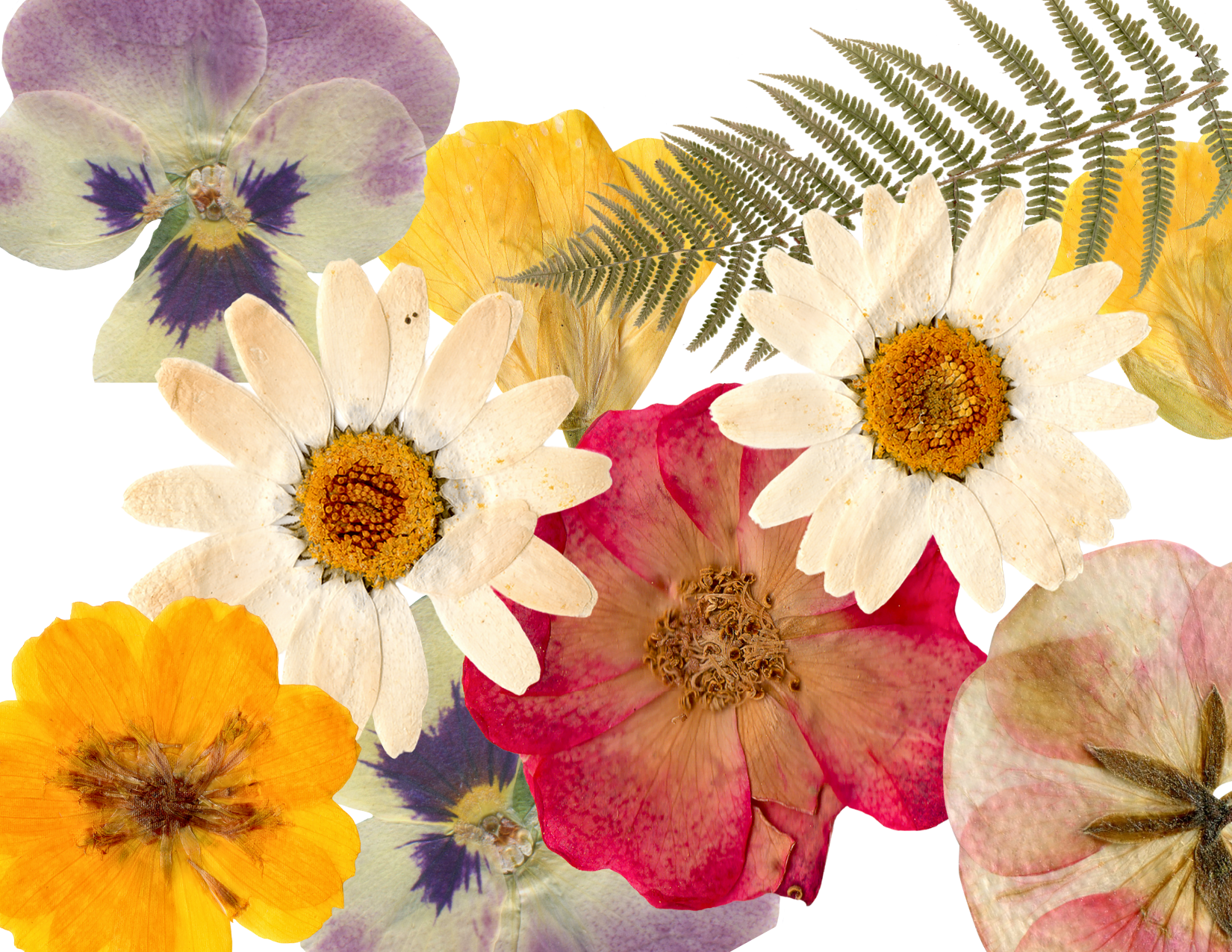There’s something quietly magical about preserving flowers. Whether it’s a bloom from a special bouquet, a wildflower picked on a walk, or a petal that holds a memory, pressing flowers lets you pause time—capturing their delicate beauty long after the petals would have faded. It’s a gentle, calming craft that turns moments into mementos, and with just a few simple tools, you can transform fresh blooms into keepsakes to frame, gift, or treasure for years to come. Here’s how to press and preserve flowers!
Step 1: Choose the Right Flowers to Press
The best flowers to press are those that are naturally flat or have soft, delicate petals. Think: violets, pansies, daisies, cosmos, baby's breath, and ferns. These blooms dry well and hold their color beautifully.
If you’re pressing a bouquet from a flower shop, pick flowers before they begin to wilt. Blooms in their prime (but not too full) will preserve more vibrantly.
Pro tip: Pick flowers on a dry day, ideally in the morning after the dew has evaporated. Avoid damp or moisture-heavy flowers, as they tend to brown during pressing.
Step 2: Gather Your Materials
Pressing flowers doesn’t require any fancy equipment—just a few household staples and a little patience.
Here’s what you’ll need:
-
Parchment paper or absorbent paper (like blotting paper or coffee filters)
-
Heavy books (encyclopedias, cookbooks—any sturdy book weighing at least a few pounds; ideally stack 2–3 books for optimal pressure)
-
Optional: Tweezers for careful placement
Layer your pressing paper between the pages of your book. The paper helps protect both the flower and the pages, while absorbing any remaining moisture. Then, simply close the book and stack more heavy books on top to create pressure.
Yes—books work beautifully for this because their flat, heavy structure provides consistent pressure and helps ensure even drying. No need to purchase a flower press unless you plan to press regularly.
Step 3: How to Press Flowers (Step by Step)
-
Place your flower between two sheets of parchment paper.
-
Gently spread the petals so they lie as flat as possible—use tweezers to make delicate adjustments without tearing them.
-
Close the book firmly.
-
Stack several more books on top to increase the pressure.
-
Leave your flowers for 1–2 weeks, checking occasionally to ensure they’re drying evenly. Look for signs like a papery texture, crispness, and a lack of moisture on the parchment paper. If you notice any curling or browning, you may need to reposition the petals or replace damp paper.
Once dry, the flowers will feel papery and delicate, fragile but beautifully preserved. Dry flowers that have been pressed correctly can last for many years when stored properly. To preserve their color and form, store them in sealed frames, acid-free paper, or archival boxes, away from direct sunlight, high humidity, and fluctuating temperatures.
Step 4: Displaying and Using Your Pressed Flowers
Once your flowers are fully dry, carefully remove them using tweezers or your fingertips.
Here are a few beautiful ways to use them:
-
Frame in floating glass for elegant wall art
-
Add to greeting cards, love notes, or bookmarks
-
Incorporate into a craft project like handmade candles or resin trays
-
Press into a memory journal or wedding keepsake box
Each pressed petal becomes a quiet reminder of a season, a moment, or a person worth remembering.
Tips for Pressing Larger or Thicker Flowers
Love fuller blooms like roses, dahlias, or ranunculus? They can be pressed too—just with a bit of extra care.
Here’s how to get the best results:
-
Trim them down: Remove thick stems and excess petals to reduce bulk.
-
Slice in half: For roses or peonies, gently cut the bloom in half vertically and press one side.
-
Flatten gently: Use the back of a spoon or your fingertips to softly press thicker blooms before placing them between pages.
-
Add more parchment layers: To protect both the flower and your book, layer extra paper around thicker blooms to absorb moisture.
-
Allow more time: Thicker flowers may take up to 3–4 weeks to fully press and dry. Be patient—it’s worth it. When you finally open the book and reveal the bloom, it often looks like a delicate watercolor painting—flattened into graceful stillness, yet full of life and color.
Pressed large blooms are striking when framed or used as a statement in art and home décor—try placing a single pressed rose in a floating frame with handwritten calligraphy underneath, or arrange several in a shadow box alongside mementos from a special event.
Let Beauty Last a Little Longer
Pressed flowers capture the fleeting beauty of nature, like bottling sunlight in a jar. Though the blooms may lie still and silent, they continue to whisper memories that linger long after the season has passed.
If you’re looking for the perfect blooms to preserve, Viola Floral’s hand-designed arrangements are crafted not just for the moment, but for the memories they inspire. Whether it’s a soft blush rose, a pale ranunculus, or a simple daisy, our flowers are carefully selected to make an impression that lasts.

